PCI-SIG Releases PCIe 4.0 Specs

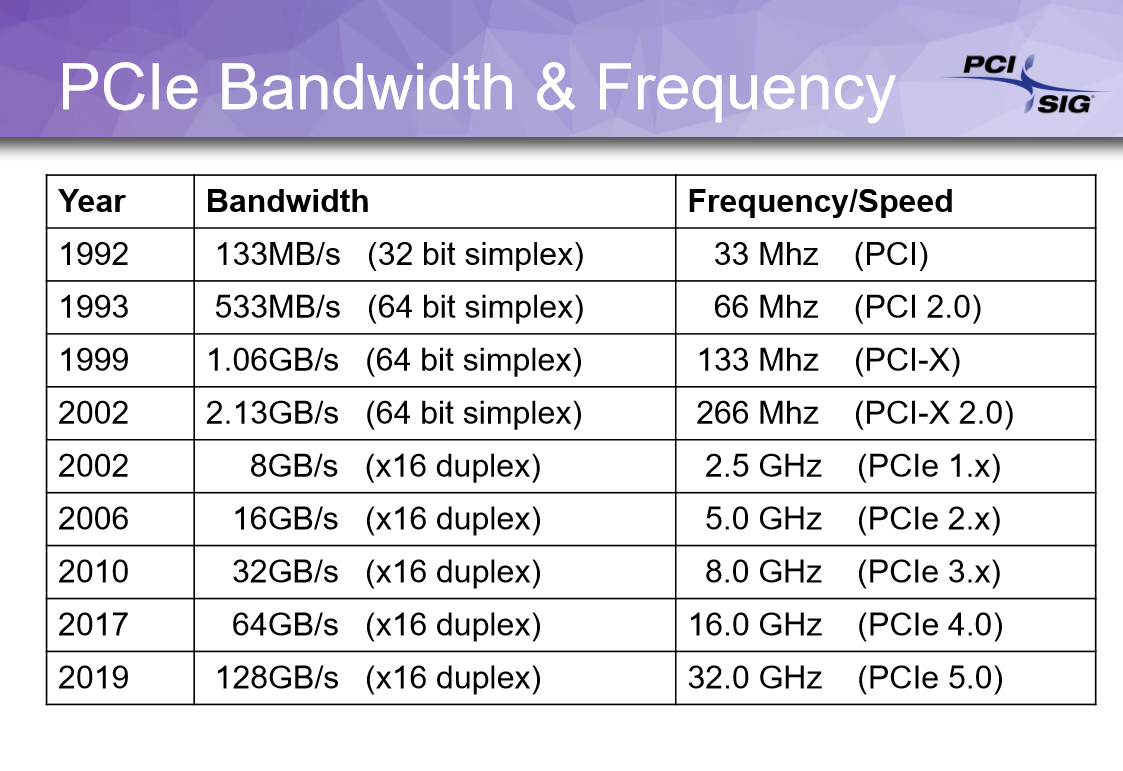
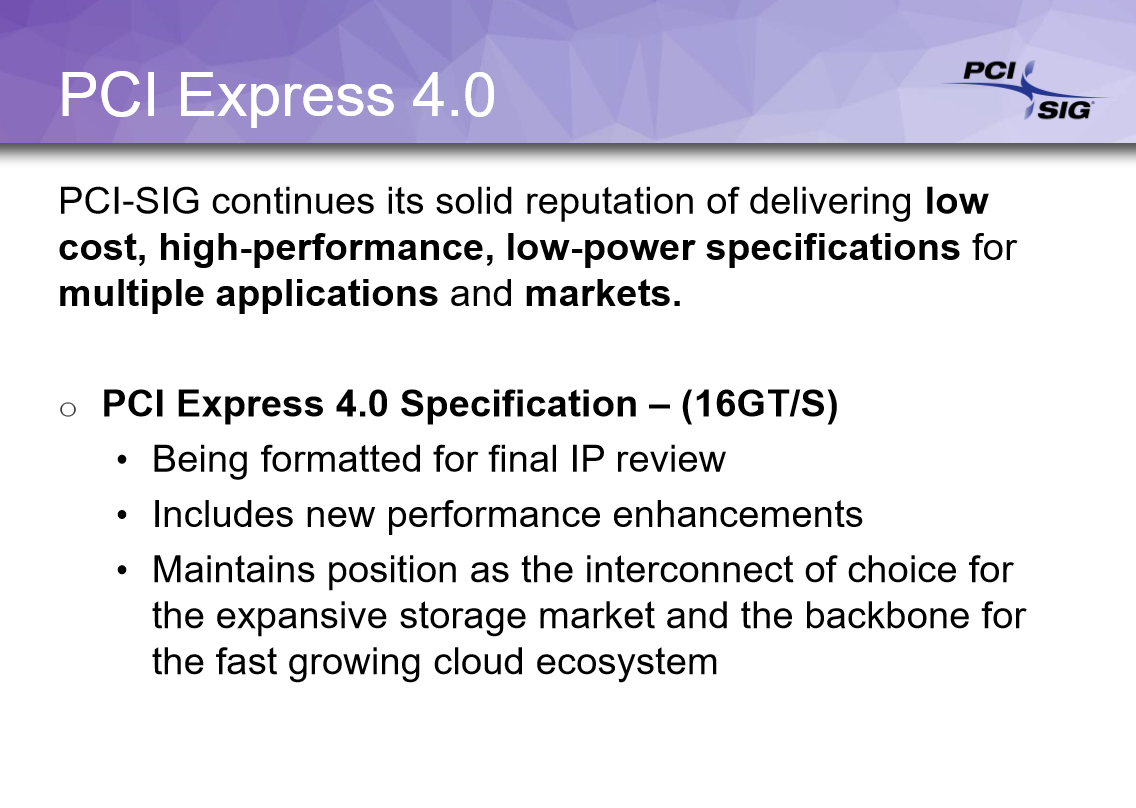
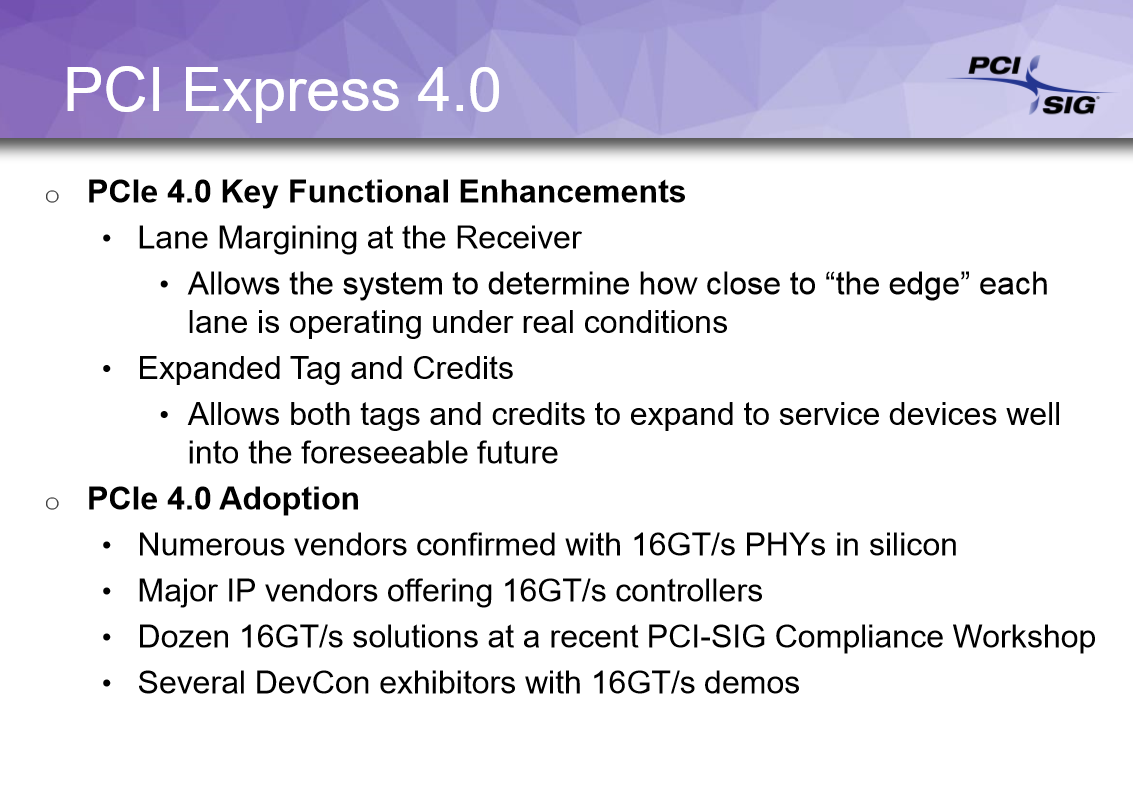

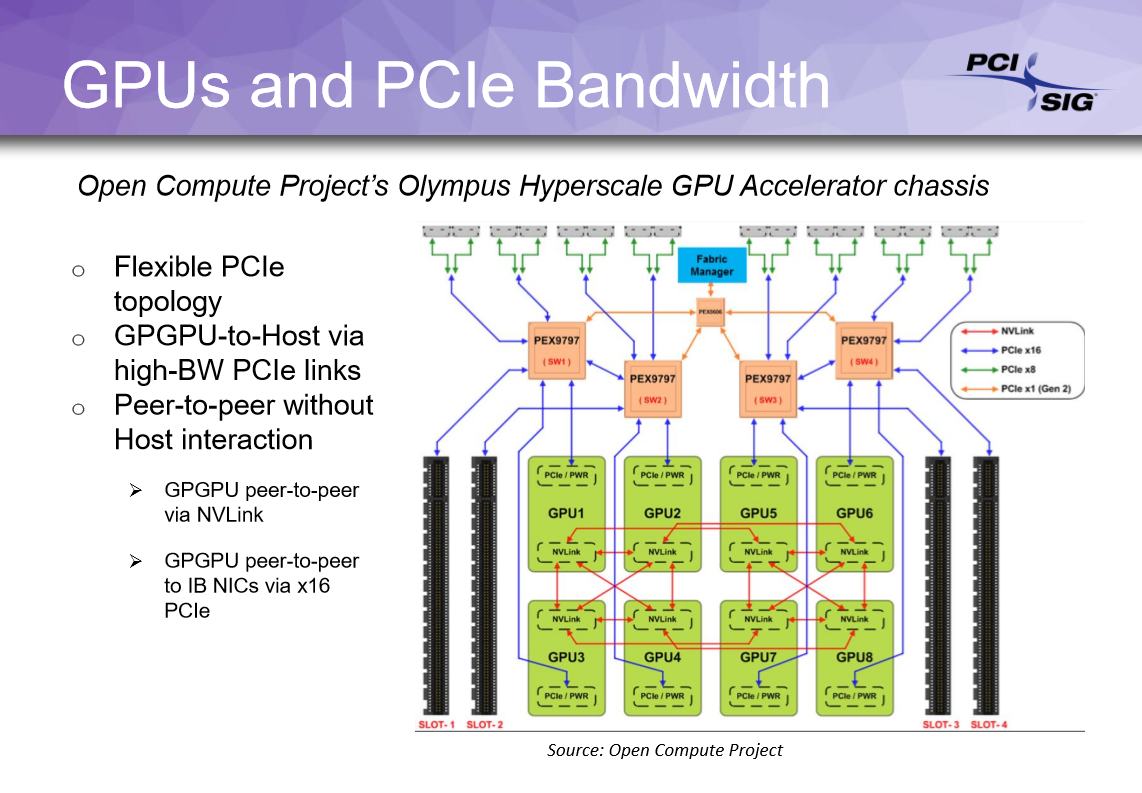

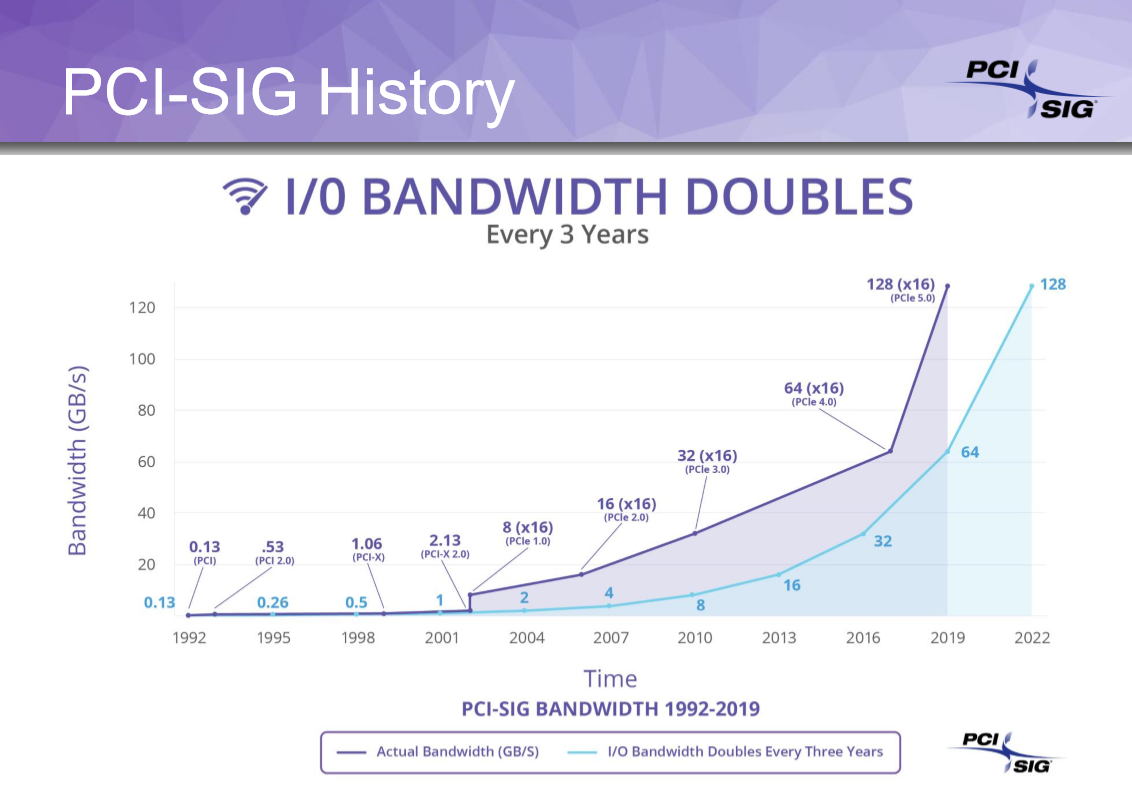
PCI-SIG released the specs for PCIe 4.0, which promises data transfer rates of 16GTps, and said work on PCIe 5.0 is well under way.
PCI-SIG is a 750 member-strong organization that governs the nigh-ubiquitous protocol. It typically releases major updates to PCIe on a four-year cycle, but the last release was PCIe 3.0, which debuted in 2010. That means it took almost twice as long to finalize and release PCIe 4.0 as its predecessors—but don't think that means development is shifting to a seven-year cycle. PCIe 5.0 is expected to make its debut in 2019.
Al Yanes, the chairman and president of PCI-SIG, discussed PCIe 4.0's highlights in a blog post. Yanes said the protocol offers:
Extended tags and credits for service devicesReduced system latencyLane marginingSuperior RAS capabilitiesScalability for added lanes and bandwidthImproved I/O virtualization and platform integration
These appear to be significant improvements to PCIe. As we said when we reported on PCIe 4.0 back in August 2016, the protocol isn't just for video cards anymore. Many different components, from storage to networking, are using PCIe to send signals to a CPU. PCIe 4.0 could reduce the price of NVMe SSDs (thanks to needing only half the lanes) and enable 10GbE connections over a single lane, for example.
Not that we'll have to live with PCIe 4.0 for long. PCI-SIG said in June that the spec entered the 0.3 release phase in its development and that it was fast-tracked for an early 2019 debut. The organization also reiterated that timeline at Hot Chips 2017 and predicted that the 0.5 release would be ready for the fourth quarter. It did not, however, reiterate that point in the email it sent announcing PCIe 4.0's release; it merely said the 0.3 release has been released. But it did offer a more specific Q2 2019 timeframe for the targeted release.
Still, it's important to note that PCI-SIG releases the specs, not the products that rely on them. We don't expect Intel to support PCIe 4.0 until mid-2019, and AMD has said it plans to add support in 2020. That means we're unlikely to see any PCIe 5.0 products until 2020-2023, depending on how much the companies stick to these gaps between the specs' release and support for them.
Get Tom's Hardware's best news and in-depth reviews, straight to your inbox.
Now that the specification is set, companies can build compliant products. A number of PCIe 4.0-related news also appeared today in the form of protocol analyzers. In the last week, we've had a number of PCIe 4.0 product leaks. An AMD roadmap pins a GPGPU / GPU with the technology in Q4 2018. Several retailers that listed the upcoming Intel Optane SSD 900P early show PCIe 4.0 connectivity (although we think this is in error), and Intel has muttered about PCIe 4.0 a time or two, with upcoming chipsets set for release in 2018.
All signs lead us to believe we will have PCIe 4.0 in the consumer space next year. The technology will enable manufacturers to lower the number of lanes per device to achieve performance levels we have today or to take a leap to new levels by utilizing the same number of lanes we use now. In notebooks, we should see greater battery life and an improved user experience. Desktops will get a hefty performance boost, as well. The technology will move us closer to true photo-realistic gaming that will impact both virtual and augmented reality.

Nathaniel Mott is a freelance news and features writer for Tom's Hardware US, covering breaking news, security, and the silliest aspects of the tech industry.
-
bit_user In the best case, I think this could usher in a new era of multi-GPU gaming & VR. Especially if we see GPU performance start to plateau, like CPUs have.Reply -
alextheblue Reply
I honestly don't think that's very likely until we start bumping into silicon limits.20309398 said:In the best case, I think this could usher in a new era of multi-GPU gaming & VR. Especially if we see GPU performance start to plateau, like CPUs have.
For VR it might be not be too big of a mess at least for twin identical cards, one GPU per eye. Otherwise it's the same old story, poor software support, all-around fustercluck. -
Icepilot "We don't expect Intel to support PCIe 4.0 until mid-2019, and AMD has said it plans to add support in 2020."Reply
"All signs lead us to believe we will have PCIe 4.0 in the consumer space next year."
Running on what? -
bit_user Reply
Yeah, that's basically what I'm talking about. It's not just feature size that's a limiting factor, but also things like leakage that limit how much benefit you get from a node shrink.20309483 said:
I honestly don't think that's very likely until we start bumping into silicon limits.20309398 said:Especially if we see GPU performance start to plateau, like CPUs have. -
JonDol I hope that for your estimations (?) about its adoption are not true and that for once AMD will rather 'set the trend' than 'catch up'. I hope this too with the adoption of the USB 3.2 so that will help us to forget the proprietary Thunderbolt.Reply -
samer.forums 5 years for PCIe 3.0 and only 2 years between 4.0 and 5.0 ? Just skip the 4.0 altogether. Otherwise companies will never produce many cards on the 4.0 and will wait until 2019. 2 years is bad for R&D and companies wont waste money on them if the 5.0 is only 2 years after.Reply
Having said that , I am waiting for the PCIe 5.0 so much ... using x4 PCIe 5.0 instead of x16 slots will save TONS of space on motherboards .. and will allow full speed external PCIe GPU with ease using just 4 lanes. -
10tacle So we go from 3 years -> 4 years -> 7 years -> 2 -> years between PCIe 1.0 to 5.0. PCI-SIG first announced 4.0 specs back in December 2011! Why the huge gap between 3.0 and 4.0? Is the Enterprise market (non-GPU devices specifically) getting in the way of things in demands?Reply -
samer.forums Reply20310828 said:So we go from 3 years -> 4 years -> 7 years -> 2 -> years between PCIe 1.0 to 5.0. PCI-SIG first announced 4.0 specs back in December 2011! Why the huge gap between 3.0 and 4.0? Is the Enterprise market (non-GPU devices specifically) getting in the way of things in demands?
because we simply did not need that bandwidth increase... there are no GPU cards that can saturate x16 PCIe 3.0 lanes today , and no SSD as well ... unless you are talking about $100K cards...
The M2 NVME SSD saturated the x4 PCIe 3.0 lanes ... so now we can make a use of Gen 4.0
IMO -
10tacle ^^Oh I understand that, especially for gaming. There are countless tests out there showing nearly zero improvement of x8 vs. x16 in gaming except in high end multi-GPU tests and extreme crazy non-realistic GPU setting like 4K in surround on low quality (https://www.pugetsystems.com/pic_disp.php?id=40772&width=800&height=800). My question was more for the professional development progress side of things (ie: Enterprise).Reply